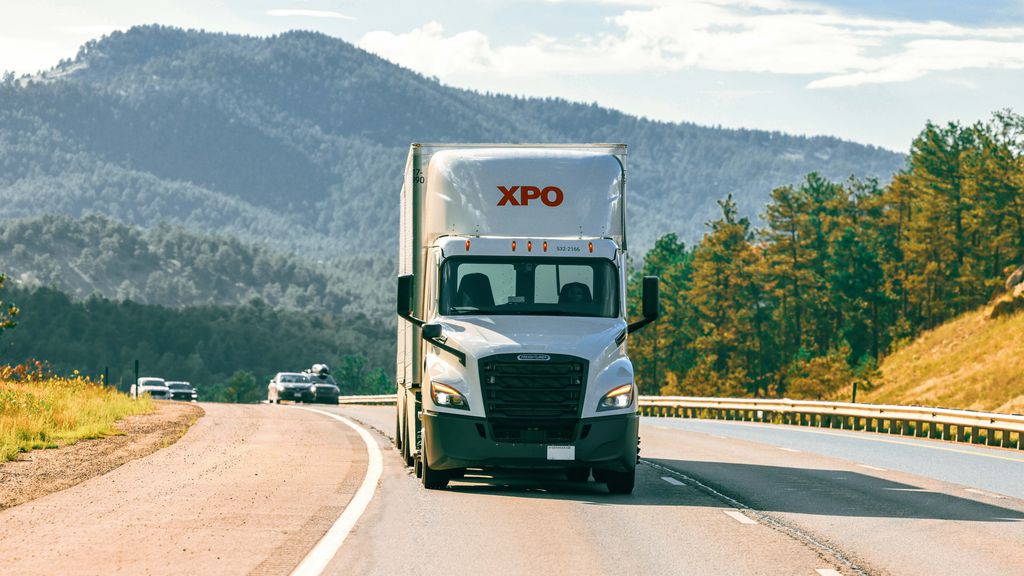How to Protect Freezable LTL Freight
Freight shipped in less-than-truckload (LTL) trailers can be subjected to extreme temperature swings as it travels cross-country, especially through the Midwest and Northeast United States and Canada during winter months. LTL trailers aren’t insulated, and ambient temperatures can impact the integrity of your goods. During periods of adverse weather, your LTL carrier may hold freight until conditions clear for safe travel, resulting in longer exposure to freezing temperatures.
If you’re shipping commodities that need to be maintained above freezing during transit, such as batteries, chemicals, alcohol and perishable foods, there are a number of things you can do to help protect your freezable freight.
"Freezable freight is any product that freezes
at or below 32 degrees Fahrenheit"
Essential Freight Transportation Guides and Tips
Trade Show Shipping: 10 Green Flags for Success
How to Ship to Mexico in 6 Steps
Common Mistakes: 4 Reasons for Delays at the Border
Freight Protection: Green Flags to Keep Your Cargo Safe
How to Calculate Your Freight Class?
Timely Tips: Product Launch Shipping Strategy
Exhibit with confidence: A Comprehensive Trade Show Shipping Guide

Your Freeze Protection Toolkit
Request Freeze Protection Service
Many LTL carriers offer freeze protection service during the months of October through April. Be sure to read the tariff details for this service, as pricing and services can vary by carrier. For example, when you choose Freeze Protection Service from XPO, your freezable freight can be rerouted to avoid extreme cold and, when available, a warming room will be used. All shipments must be labeled “protect from freezing” and you’ll need to clearly state on the bill of lading that the product must be protected from freezing. Also, be sure to mention that your freight is freezable when scheduling the pickup.
Get the latest news and updates on XPO
Use Pallet Covers and Insulated Cargo Blankets
Pallet covers, generally made from polyethylene plastic, come in thicknesses ranging from 1 mil to 6 mils. They provide protection against humidity, sunlight, moisture, dust and other environmental stresses during transport. The material can be purchased in multiple pre-cut sizes, or you can order custom sizes to more fully protect your shipments from the elements.
Insulated cargo blankets offer additional protection against extreme temperatures by creating an barrier around the freight. They’re designed to regulate temperatures for products that require a stable environment and reduce the likelihood of freezing during transit. Cargo blankets are available in different sizes to give you flexibility in how you protect your freezable freight.
Add Temperature Monitoring
Attach sensor devices to your pallets so you can monitor temperatures during transit. These sensors, paired with smart devices, do more than passive monitoring — they’ll also send you alerts if temperatures go above or below the threshold you set. Sensors can be a cost-effective way to track freight temperatures, allowing you to be proactive in asking your carrier to reroute your freight or hold it until the weather improves.
Ask about Heating Solutions
Some LTL carriers can place portable heaters near freezable freight to protect it from extreme cold. This is not an option for flammable or hazmat products, but it might be suitable for some freight. In addition, some LTL carriers may be able to offload your freight temporarily to a dock or secure room to protect it from freezing.
Ship on Weekdays
Time your shipments of freezable freight to avoid transit over weekends whenever possible. LTL freight is cross-docked and moved to trailers that sit outside on weekends, which could result in several days of exposure to freezing temperatures while waiting for the next move. Coordinate the timing with your LTL service provider, because some carriers don’t pick up freezable freight on certain days.
Other Options
If you have the luxury of time, you can push your shipments to later dates when weather conditions are more favorable. Of course, this isn’t always practical, but it’s worth weighing the risks of exposure and potential product damage against the benefits of waiting.
When a shipment absolutely must get there without delay, consider an expedite option that offers non-stop service or specify a refrigerated, temperature-controlled truck. These trucks are equipped to maintain a constant temperature during transit.
Finally, monitor weather forecasts across the span of your shipment’s movement. Remember, your freight may need to travel through freeze areas even if the conditions at origin and destination are warmer. Many carriers will notify you if there’s a freeze embargo in effect for your origin or destination. Some may also offer a map view, like XPO's LTL Service Level Map. This is a great tool to use when planning your pickups during the winter months.
Know your options, and with a little extra effort, you can help protect your LTL freight during cold weather transit and ensure delivery intact and damage-free. Contact your local XPO LTL service center to learn more about transporting your freezable LTL freight.
Further Reading


